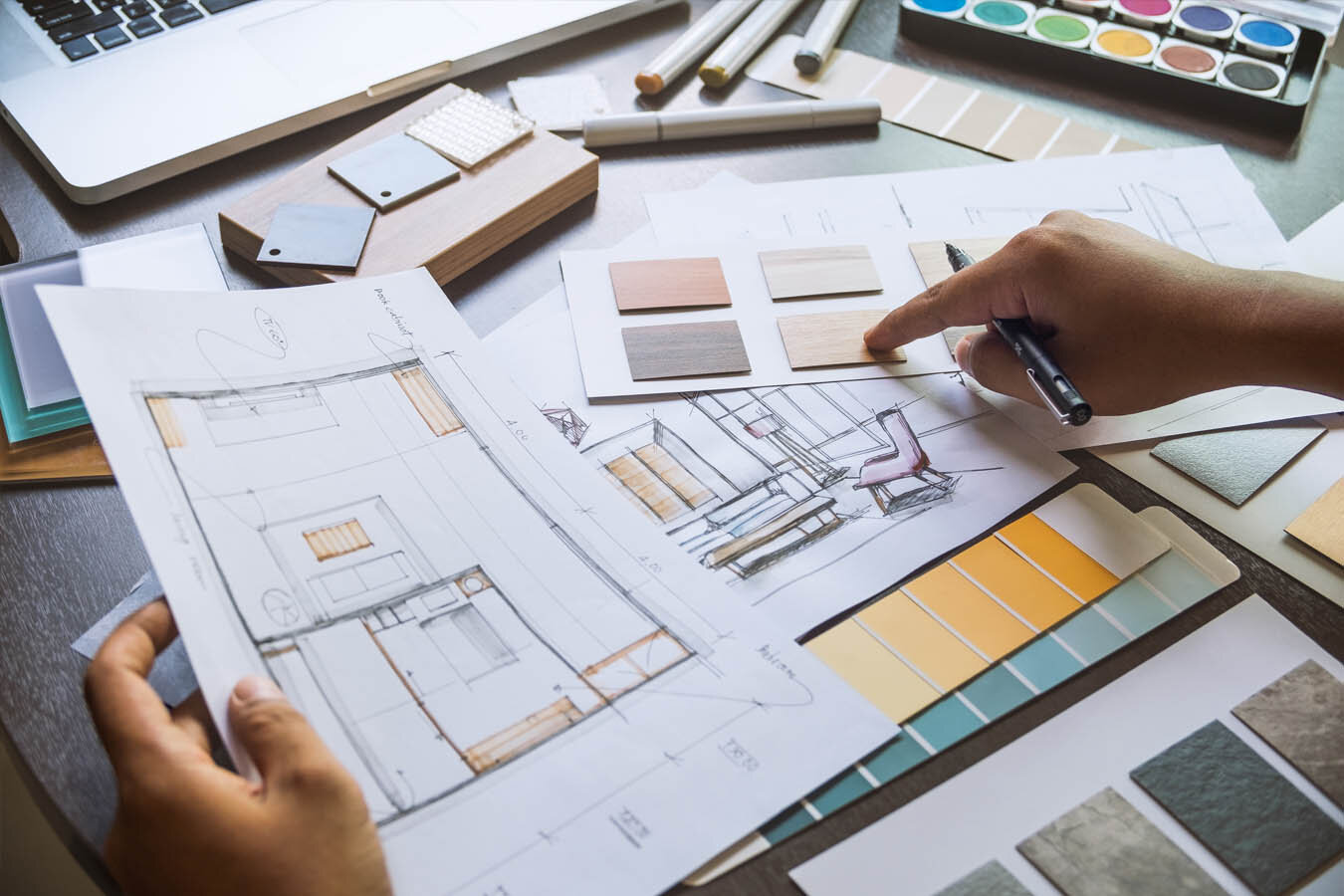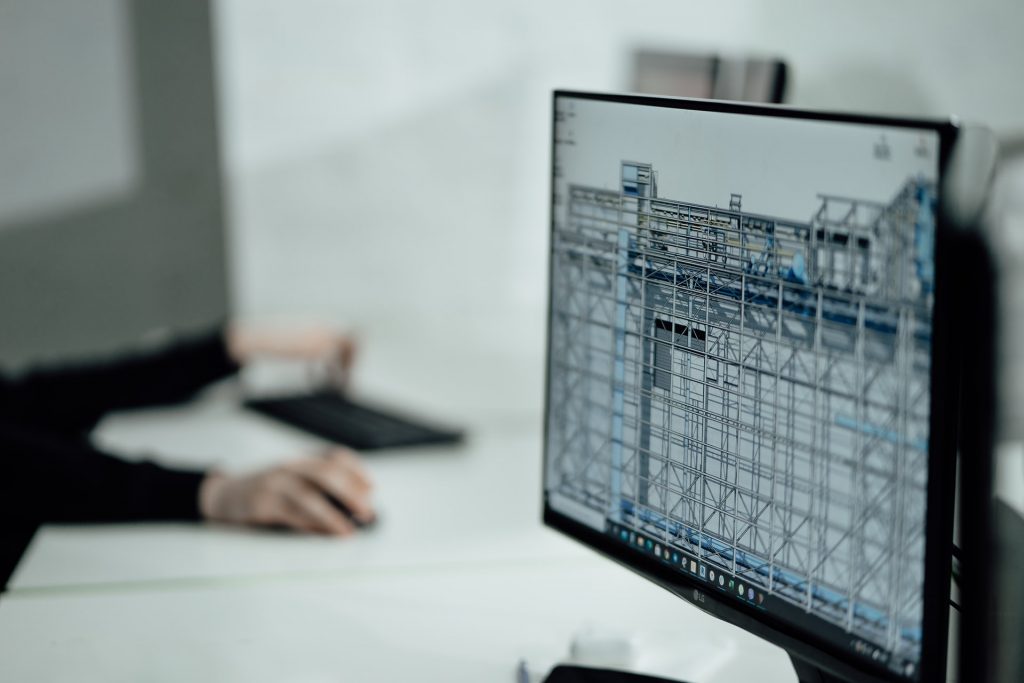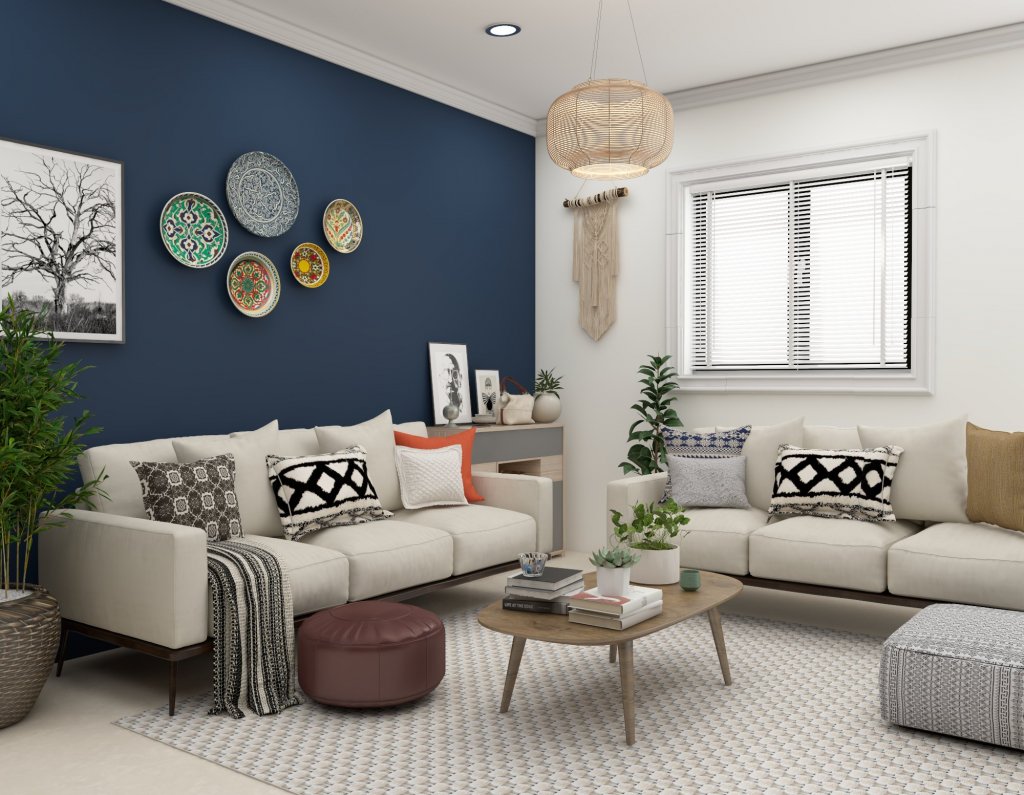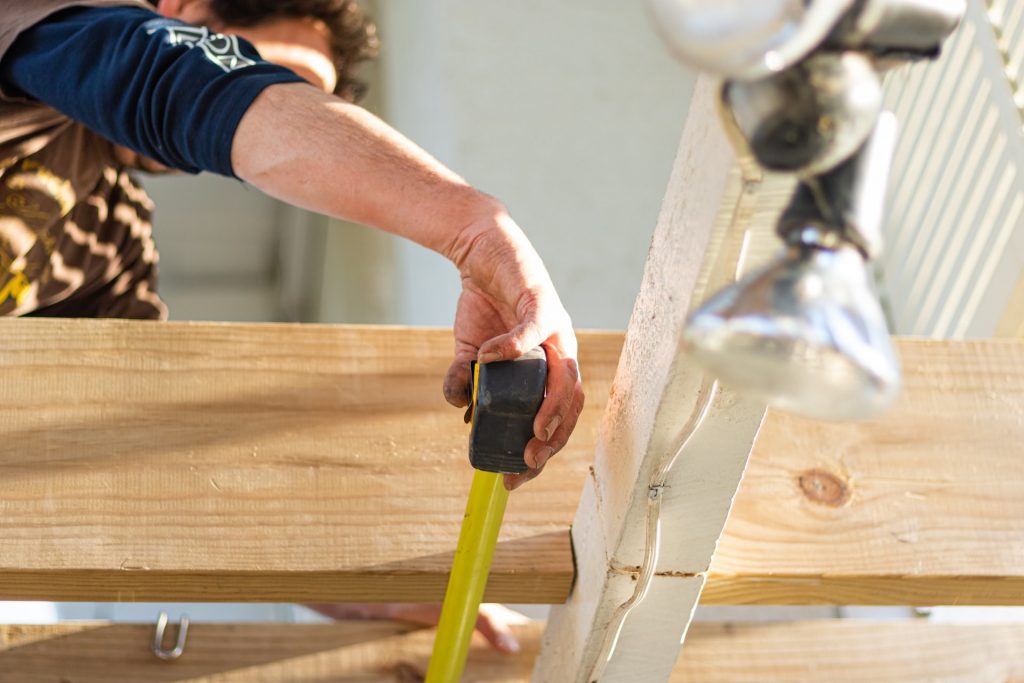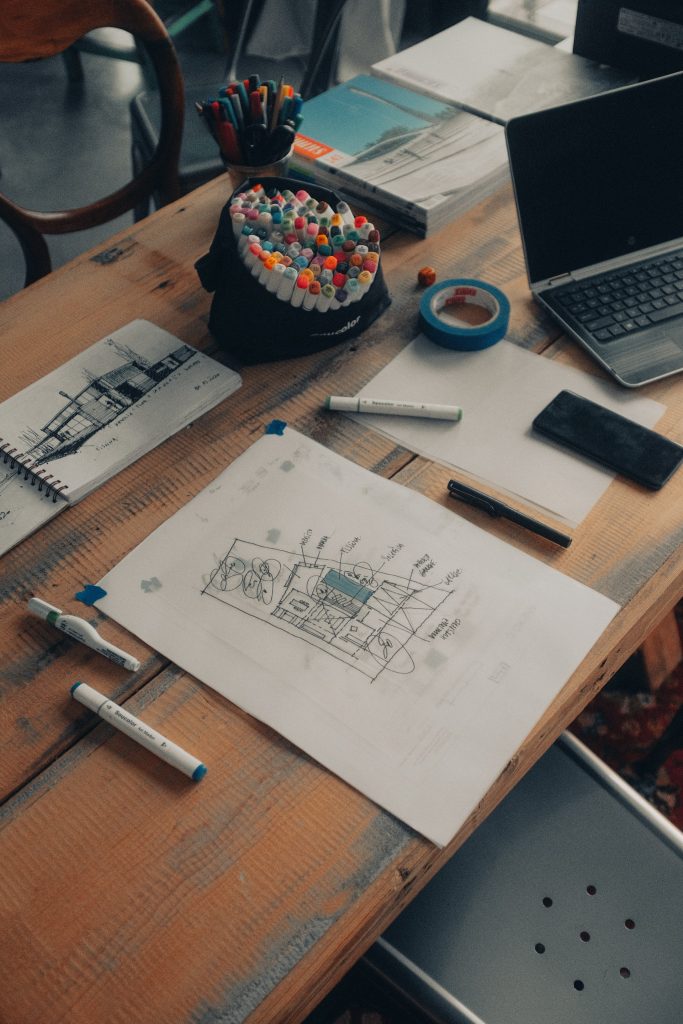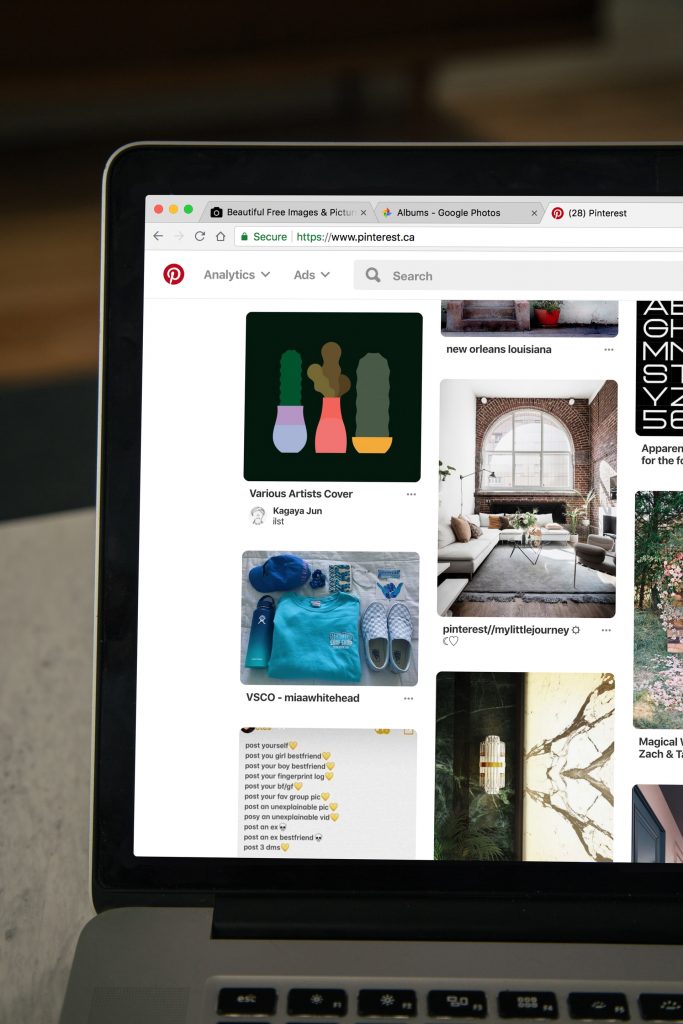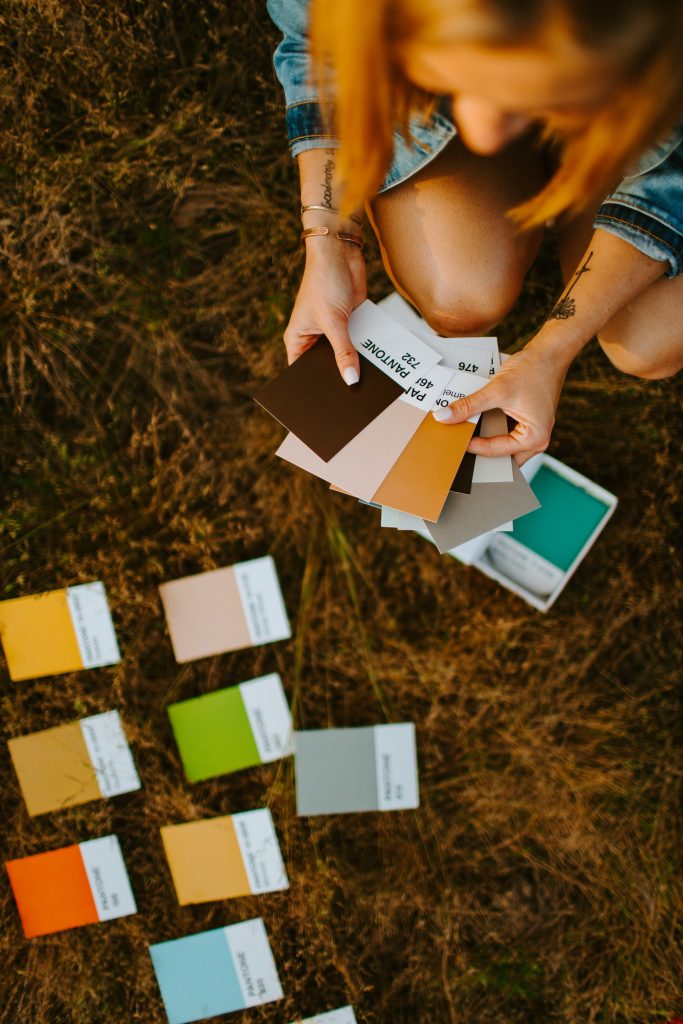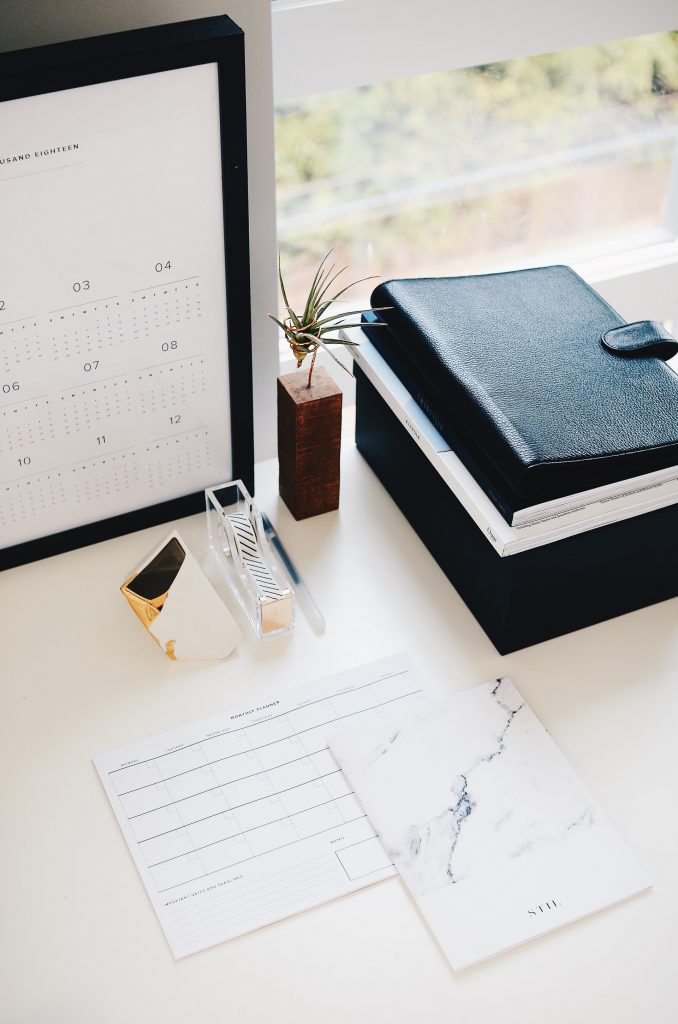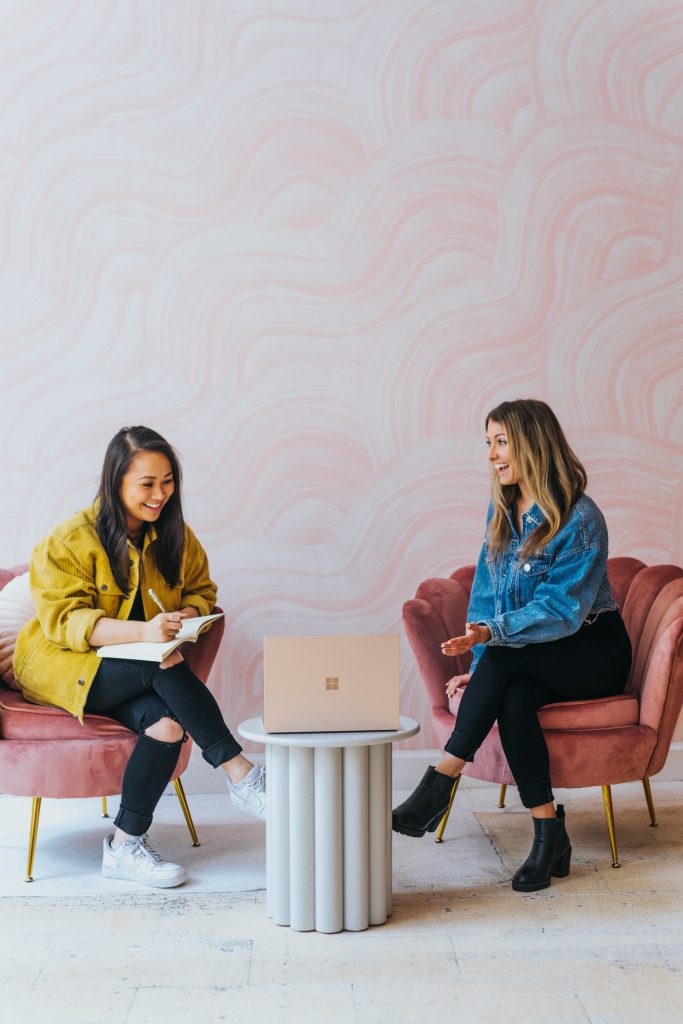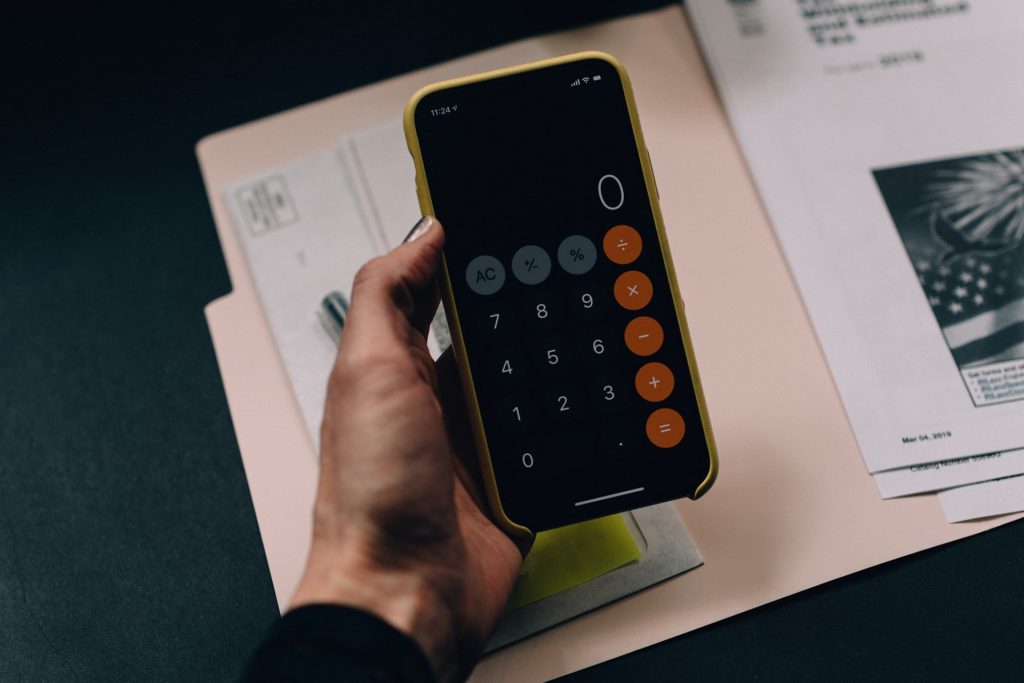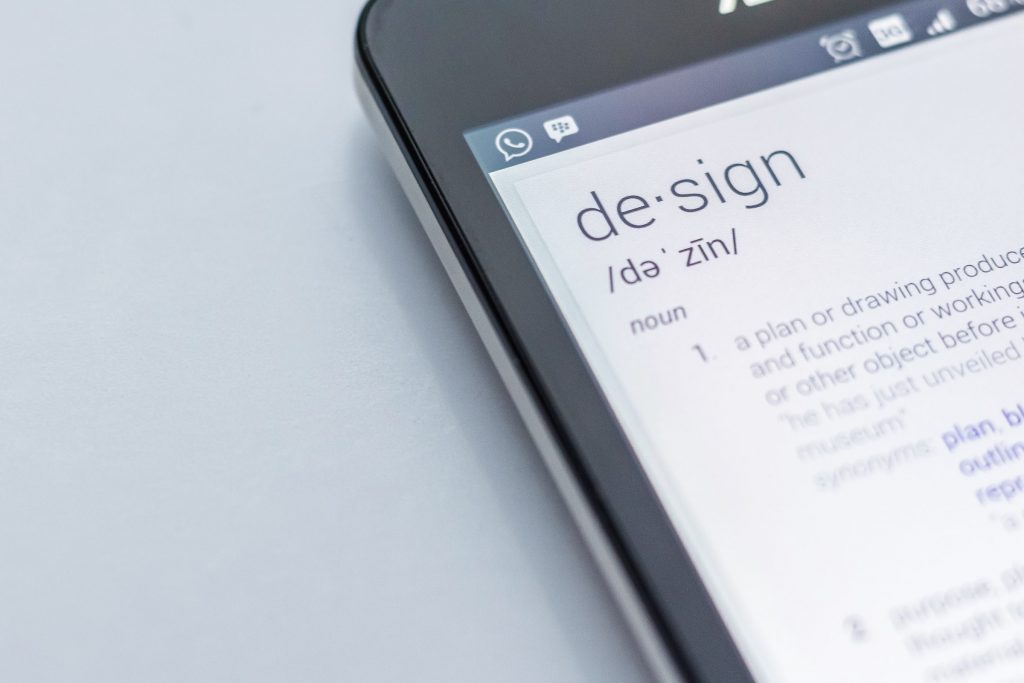Interior Design Essential Tools
Interior design has an ebb and flow that keeps shifting with the world around us. Because interiors is a process. It’s constantly evolving- from creating a mood board to fixing the last bulb, the process of space planning and interior decorating needs constant care and attention.
Becoming an interior designer is a rewarding career that balances creativity and utility to serve others. Interior designers fashion beautiful and practical home design, providing the keys to the clients’ problems and fulfilling their requirements.
In this process, designers need to swap plans, find alternates to material and find solutions to newborn problems in the project. All the while appeasing and reassuring the client.
Such flexibility and quick, critical thinking require deep commitments and hard work. Interior designers who pursue this career hold bachelor’s degrees in interior design or architecture for.
Specific tools of the trade help interior designers stay on their toes and remain composed themselves. So while these apps and tools aid the design process, designers have to roll up their sleeves, and inhale in all that the under-construction site has to offer.
10 Essential Tools An Interior Designer Uses Every Day:
1. CAD Software
The passionate doodles on a paper towel from the café won’t cut it for long. You need to convert them to orderly, fixed plans that everyone from vendors to builders can follow.
CAD (computer-aided design) lays the foundation stone of design. Technical drawings and plans adhering to building codes and rules are drafted via this professional software.
Image Credit: caddetailsblog.com
It’s vital these drawings are accurate and as meticulous as possible for increased functionality and to avoid any miscommunication or errors during construction.
Furthermore, apps like AutoCAD 360 allow you to view and share drawings on-site via your phone.
Blueprints are a thing of the past, and we condone the conservation of paper.
Read also – 12 Best Architecture Design Software
2. Foyr Neo - 3D Modeling Tool
3D interior design software is mandatory for expressing the narratives behind your design fluidly.
However, most software like Sketchup and Vray are time-consuming with long render hours and a complex user interface.
Make way for Foyr Neo! The zero learning curve, exhaustive library, quick cloud-rendering, and AI-driven auto-lighting means you can transform design ideas and floor plans into photorealistic images of the finished interior space within minutes during the meeting for their approval. No more wasting precious resources and time on modeling and rendering.
Photorealistic images and visualization on the go!
Read also – 21 Best 3D Modeling Software
3. Measuring Tape –Standard, And Laser
Measuring devices are indispensable parts of interior design.
However, a floor-to-ceiling measurement can get uncomfortable and awkward in front of the client when you are expected to look presentable and keep talking to your client while measuring.
Read also – betterteam.com
For this reason, we have laser distance detector devices, which make the job easier.
The standard steel tape can be used for more precision measurements like moldings and the soft tape to measure curves such as a rounded pillar.
Read also – How To Draw A Floor Plan?
4. Sketchbook
You always need a piece of paper to draw or write something on when on the job. Unfortunately, the tissue mentioned above is neither professional nor an articulate way to sketch specifics in the presence of a client.
Be it a standard square feet approximation or a quick sketch of the exact bespoke coffee table you are getting crafted, a sketchbook is a handy and essential piece of equipment.
Don’t forget to stock an ink pen or colored pens set for some impressive doodle art!
Read also – Interior Design Sourcing and Procurement
Image Credit: unsplash.com
5. Pinterest
Life before Pinterest was indeed a listless one!
The unique website offers a surplus of excellent quality images that can serve as an inspirational base for your design.
Image Credit: unsplash.com
It’s one of a kind algorithm that makes sure you really get your hands on some high-quality, professionally clicked images when you type in a keyword.
The whole idea where designers can access millions of inspirational images based on design styles has been a game-changer for the design community.
But “research is an art, “and one must know what exactly to search for on Pinterest to get the best possible match to your subject.
Read also – Pinterest Marketing for Interior Designers
6. Connections
Networking is what design professionals thrive on. It is said the 70% of real estate and interior design businesses are gained through word of mouth.
You must keep in touch with your vendors, friends, and past clients who can spread the word about your business and recommend your services.
Image Credit: medium.com
One must also attend design conferences and keep abreast of the constant flux in the design world so that they don’t fall behind their peers.
Read also – 7 Best Interior Design Communities
7. Pantone Shade Book
What can be more important than colors in a project?
The shade cards equip you with quick access to an entire color palette. There also exist online tools, but the experience is nowhere near the same.
Instead, the shade card enables you to determine how exactly each paint color looks in a particular room under the changing sunlight throughout the day.
Image Credit: unsplash.com
This helps you decide the general color scheme and what shade compliments different home decor being used in the room. For example, rooms facing south are abundantly sunlit and receive oodles of its warm light. Thus it’s recommended you pick a color with a slightly cool undertone to balance out the warmth and avoid the room looking “sunny-side-up”!
Moreover, it is conducive to significantly narrowing down colors being picked for final wall swatches.
Since most of the time, the client’s failure to visualize or instead recognize the color may lead to discord during executions.
Read also – The Psychology of Colors in Interior Design
8. Project Managing Software Or Personal Planner
Many interior designers are bad at time management when they get carried away by the cosmic possibilities of design.
Several applications automatically calculate and warn you about impending deadlines or renewed schedules based on the current changes in design or decision.
Image Credit: femfounder.co
However, there may be a slight learning curve involved in using this software. In larger firms, there are specific project managers designated to maintain the time and cost schedule.
The best part is that you can have a timeline and scheduled flowchart prepared and printed for everyone, including the client, to see.
This encourages effective communication and transparency of work between the service providers and clients.
Read also – The Ultimate Guide for Interior Design Project Management
9. Good Set Of Business Attire
Dress for the job you want. It should be an absolute priority to have a professional yet chic wardrobe covering formal, business casual, and semi-casual looks ready to go.
Image Credit: modernfellows.com
Dressing immaculately gives the impression of a systematic and competent mind and boasts of attention to detail.
However, don’t hesitate to get creative with your attire and show some edge because you could be your own walking portfolio when presenting how creative you can be.
It doesn’t bode well for anyone if the homeowners drop by unexpectedly to see you in your worn-out jeans and flannels covered in construction dust. Talk about awkward!
Read also – 20 Best Client Presentation Tips for Interior Designers
Daily Life Of An Interior Designer: What Do They Do Every Day?
1. Who Do They Deal With?
An interior designer might just be the most resourceful and sociable (at least professionally) person you will meet on any typical day.
Considering their work takes them to so many places, it’s evident that they are left to interact with new people almost daily.
Along with the usual crowd of contractors, on-site workers, architects, and project managers, there are other variables that interior designers interact with daily too.
Read also – What Does An Interior Designer Do?
Image Credit: unsplash.com
Other than their fixed, trusty vendors, they always look for newer and better materials, styles, and products. Which means added sales representatives and vendors to talk to.
They also have to regularly keep an inventory and stay in touch with past, present, and potential future clients.
Finally, there’s the best kind- the drive-by “meet-cute.” Interiors designers cannot resist the pull of something pretty in a window, especially if the shop housing it is an old, worn-out antique shop, second-hand boutique, or better yet, a tepee at the flea market! Conversation at these places with strangers is generally soulful, covering everything from the object’s origin to a narrative of the new house it may be going to.
A designer’s mettle and proficiency in design services are measured by their network of connections or contacts and how fast and effectively they can utilize them.
Read also – How Much Do Interior Designers Make?
2. Project Management
The crux of any successful interior design project.
This cog of the process wheel oversees everything from initial conceptual meetings to the workflow and handing over the keys to the client. This is where a project makes or breaks.
Image Credit: towardsdatascience.com
Even if the design is stellar, chances are poor planning and execution will leave you with a slapdash and less than optimum finished result at hand.
This phase involves careful planning to chart out the entire process’s budget, timeline, and steps. A schedule is then made accordingly. Finally, handing out the costing, timeline, and most essential duties in the whole project.
Read also – 10 Best Client Management Tips for Interior Designers
3. Team Management
We have already looked at the endless chain of contacts a design firm makes. Like any organization, an interior designer is in the company’s face, and a team supports them in this journey.
The group consists of vendors, contractors, painters, masons, and carpenters to other designers, interior decorators, project managers, 3D artists, site supervisors, civil engineers, and architects.
Read also – simonsinek.com
Designers are undoubted the glue that holds them together. However, a good, efficient team is pivotal for the smooth running of the firm since the designer himself cannot be at every internal meeting or decision.
Hiring (or firing) the right team member is what makes all the difference in a designer’s claim to fame.
Read also – What Is E-design? – Everything About E-design
4. Vendor Management
An interior designer has to be very adept and shrewd when it comes to vendors.
Vendors are essential in the supply of raw materials and design elements. Therefore, the designer needs to know the quality, price range, and market trends for profitable transactions.
Image Credit: unsplash.com
An unethical vendor charging huge overheads leads to wastage of funds, with the project sometimes adversely affected. Once the designer is moderately established, vendors visit instead of the designer running behind them to establish a working relationship.
Read also – How Do Designers Get Interior Design Clients On A Low Budget?
5. Accounting
Every project has one factor that should constantly be under close scrutiny- budget and accounts.
Image Credit: summitcpa.net
Apart from managing the company’s financials, the accounts team also assists in making a budget for the project that sets up boundaries for the client and the designer to experiment within.
They also keep track of payment milestones to ensure no payment deadline is skipped and that there is no drain of funds from the firm.
Read also – Finance Management for Interior Designers
6. Core Design
The heart of every project – The Design team. These are the group of individuals who are responsible for capturing a potential client.
They are the creative bunch who work together to draw up mood boards, templates, make presentations, design plans and technical drawings, and 3d models to better sell and execute the design.
Image Credit: medium.com
In larger firms, they are sometimes given more prominent roles to manage an entire project without interference from the design lead based on their capacity to handle projects.
Your design team must match your likes, dislikes and understand your general taste in design.
Otherwise, it could lead to a waste of resources because you would never get valuable inputs or sound outputs.
It is generally also the core team that manages the social media end by updating project status and photographs each time they go for a site visit or furniture scavenging.
Start a Successful Interior Design Business With the Right Software
If you have the right business tools, each stage of the interior design process will be easier and more efficient. Foyr Neo is a one-stop-shop for all your design needs. The multifaceted design software has so many features to choose from that it makes it easier to visualize your design ideas more effectively.
- 60K + ready to use products
- Build Floor Plans, edit in 3D
- Drag and Drop Interface
- 4K Renders in minutes
Furthermore, it doesn’t take up a whole lot of space due to its incredible cloud computing feature. It saves time and money on licensing. Anyone can create absolutely remarkable home designs with these design tools. Foyr Neo is now available for a 14-day free trial, allowing you to explore the potential of infinite creation.









